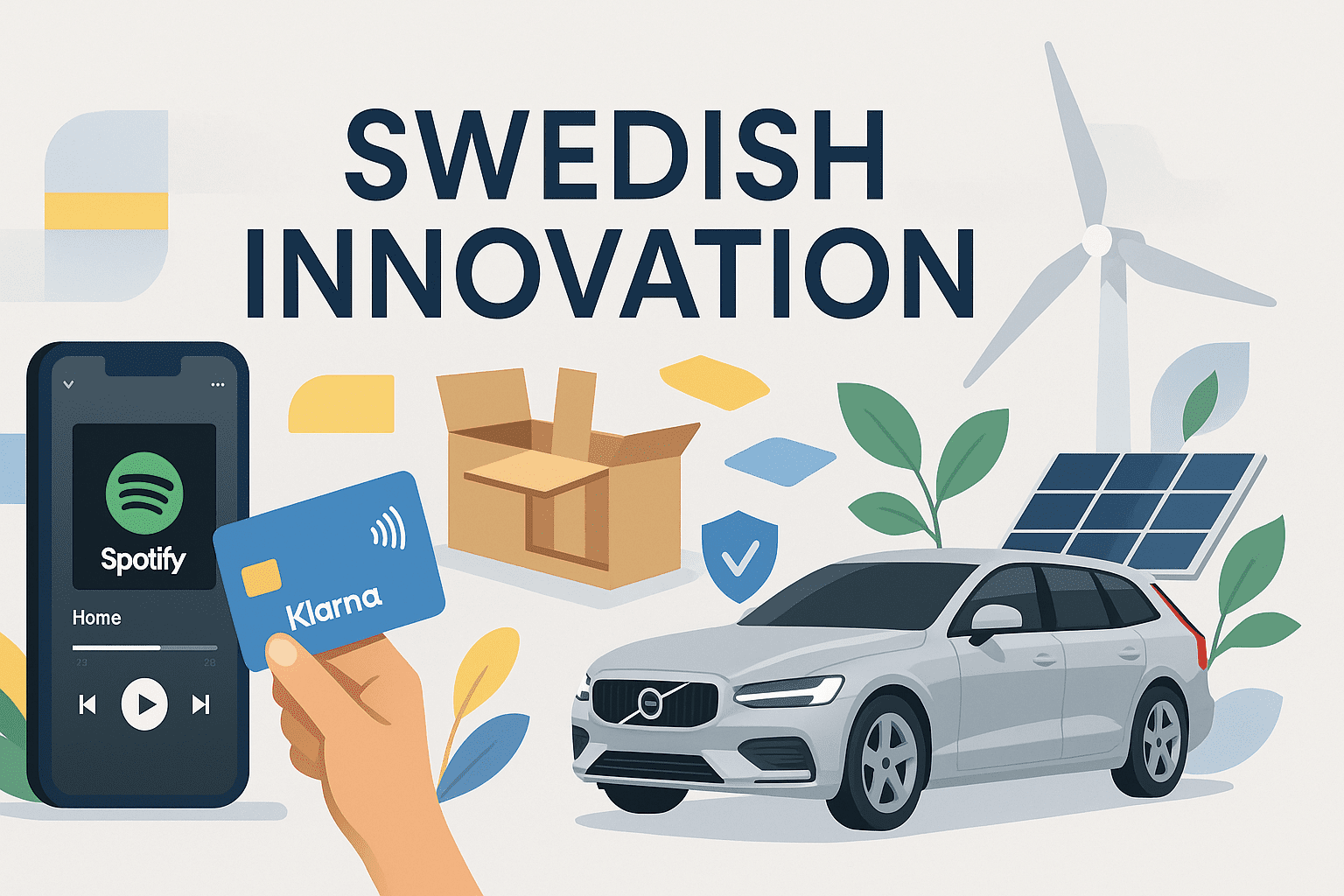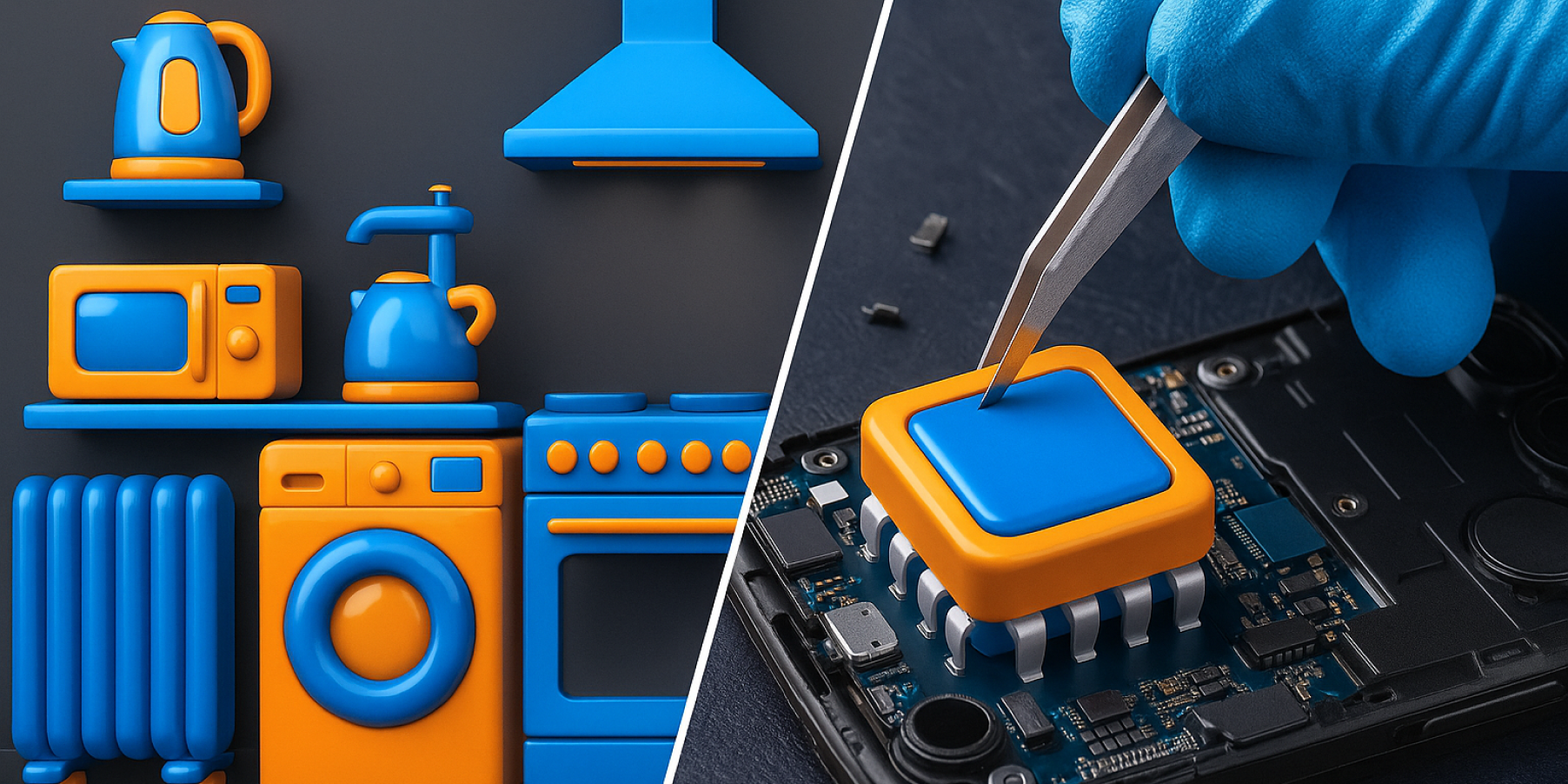Swedish Innovations That Change the Way We Live Every Day
June 9, 2025

When people think of Sweden, IKEA’s flat‑pack furniture and Spotify’s endless playlists usually spring to mind. Yet those two household names are only the tip of the iceberg. From the three‑point seatbelt that saves a life every six minutes to the Bluetooth chip inside your earbuds, Swedish innovations quietly power modern life.
Although it has barely 0.13 % of the world’s population, Sweden consistently ranks among the planet’s top two most innovative economies — thanks to a culture that prizes education, egalitarianism and sustainability WIPO. This article explores why the Nordics excel at invention and spotlights twelve breakthrough brands and products that prove it.
What Makes Sweden So Innovative?
Historical Roots of Inventiveness
Sweden’s inventive streak stretches back to Alfred Nobel’s dynamite in 1867 and the first adjustable pipe wrench in 1891. A national respect for engineers and scientists is woven into school curricula and popular culture.
Education, Engineering & Social Responsibility
State‑funded universities, generous parental leave and a robust safety net let Swedes tinker without fearing failure. That freedom yields globally minded ideas such as carbon‑negative steel prototypes and precision‑guided medical devices.
Design × Function × Sustainability
Minimalism is not just an aesthetic; it’s a problem‑solving philosophy. Products must be lagom — “not too much, not too little” — and sustainable by default. Whether it’s IKEA removing plastic from all consumer packaging by 2028 or Volvo vowing that no one should die in a new Volvo by 2030, utility is inseparable from ethics.
Top 12 Swedish Innovations & Brands That Shaped the Modern World
Below is a concise overview of the companies, inventions and the everyday problems they solved.
| # | Brand / Innovation | Year Launched | Core Contribution | Global Impact |
|---|---|---|---|---|
| 1 | IKEA flat‑pack system | 1956 | Affordable, DIY furniture | €45 bn sales in FY 2024 |
| 2 | Electrolux appliances | 1919 | Ergonomic, energy‑smart white goods | €328 m R&D loan for greener tech 2025 |
| 3 | Zip fastener | 1913 | “Separable fastener” for clothing | Standard on billions of garments |
| 4 | Walking frame (rollator) | 1978 | Mobility aid for seniors | 50 m+ users worldwide |
| 5 | Spotify streaming | 2008 | Freemium music model | 615 m monthly users, 248 m subscribers 2025 |
| 6 | Skype (with Denmark) | 2003 | Free global VoIP calls | 40 m+ daily users at its 2025 peak |
| 7 | Bluetooth (Ericsson) | 1994 | Short‑range wireless standard | 5 bn device shipments per year |
| 8 | Volvo three‑point seatbelt | 1959 | Universal crash restraint | ≥1 m lives saved |
| 9 | Adjustable spanner | 1891 | Self‑tightening wrench | Toolbox staple on every continent |
| 10 | Tetra Pak aseptic carton | 1952 | Shelf‑stable food packaging | 183 bn packages sold 2024 |
| 11 | Essity femtech (Libresse, TENA) | 2024‑25 | Smart pads & menopause wearables | Fastest‑growing femtech segment in EU |
| 12 | H&M fast‑fashion ecosystem | 1947 | Democratized runway trends | SEK 234 bn sales FY 2024 |
As the table shows, Swedish creativity spans kitchen drawers to cloud servers, saving time, energy and even lives along the way.
💡 Everyday Life & Home
- IKEA turned the tedious chore of furniture shopping into a Saturday adventure with flat‑packs small enough to fit in a car trunk.
- Electrolux leads the charge toward zero‑waste kitchens, investing €328 m in AI‑driven, energy‑efficient appliances that extend food freshness.
- Gideon Sundbäck’s zipper is now so common we forget it was once cutting‑edge.
- The rollator walker, released without a patent fee, epitomises Swedish altruism.
These household heroes illustrate how Swedish brands prioritise practicality over flash.
🎧 Tech & Connectivity
- Spotify rewrote the music business, offering on‑demand tracks and revenue‑sharing models that other platforms now copy.
- Skype, created by a Swedish‑Danish duo, normalised free international calls long before Zoom fatigue.
- Bluetooth, born at Ericsson’s Lund lab, connects five billion devices annually, from smartwatches to tractors.
Together they showcase Scandinavian mastery at human‑centred digital ecosystems.
🚗 Transport & Safety
- Volvo turned safety into a brand promise; its experimental EX60 SUV debuts a multi‑adaptive belt that tightens pre‑crash to fit each passenger.
- The original three‑point seatbelt remains the gold standard, saving at least one life every six minutes.
🛠 Tools & Industrial Design
- Johan Petter Johansson’s adjustable spanner still appears in every mechanic’s kit.
- Tetra Pak cartons keep milk safe for six months without refrigeration and now feature plant‑based polymer caps to cut CO₂ by 20 %.
- Atlas Copco drills and compressors extract wind‑farm foundations beneath the North Sea.
🩺 Health & Hygiene
- Essity integrates menstrual‑health sensors into pads and partners with FemTechLab to accelerate startup breakthroughs.
- Rune Elmqvist’s implantable pacemaker (1958) has evolved into MRI‑safe models that extend lives by decades.
👗 Fashion & Lifestyle
- H&M delivers runway trends within weeks at a price students can afford; digital try‑ons using AI cut returns by 10 %.
- ACNE Studios proves Scandinavian minimalism can fetch luxury‑level margins, while COS and Monki export a subtler form of “quiet luxury.”
Cultural Philosophy Behind Swedish Innovation
Swedish inventors seldom guard breakthroughs behind ironclad patents. Nils Bohlin’s seatbelt patent was opened so every automaker could copy it, a decision often cited as one of the most altruistic in industrial history.
At the heart of this generosity lies lagom — the pursuit of “just enough.” This balanced mindset discourages over‑engineering and drives solutions that are intuitive, inclusive and eco‑friendly. Whether through IKEA’s circular furniture buy‑back scheme or Essity’s open‑innovation femtech accelerator, accessibility is non‑negotiable.
The Global Impact of Swedish Innovation
Roughly two billion people stream music through platforms influenced by Spotify’s freemium model. More than a million lives owe their survival to Volvo’s seatbelt. Every carton of shelf‑stable milk your child drinks might come from a Tetra Pak plant.
Across fashion, music, medicine and mobility, Swedish companies scale without losing their soul — a feat many Silicon Valley giants struggle to replicate. Their north‑star metrics include carbon intensity and social good, not just shareholder return.
Below are three high‑level takeaways that marketers, engineers and policymakers can borrow from the Nordic playbook.
- Design for humans first. Form, function and ethics share equal rank.
- Open when it helps. Strategic patent generosity can expand total market size.
- Sustainability sells. Green credentials are no longer a cost centre but a competitive edge.
These lessons prove that small markets can birth outsized global change when innovation aligns with values.
From Allen keys to AI chips, Swedish innovations remind us that great ideas thrive where curiosity meets conscience. The next time you click a Bluetooth headset or fasten your seatbelt, remember that it all began in a country that believes technology should serve people — and the planet — lagom‑perfectly.
By embracing usefulness over flash and sustainability over short‑term gains, Sweden shows the rest of us how to invent a better future. Perhaps the ultimate Swedish export isn’t furniture or streaming, but a mindset: think usefully, build simply, and always keep humanity at the centre.










